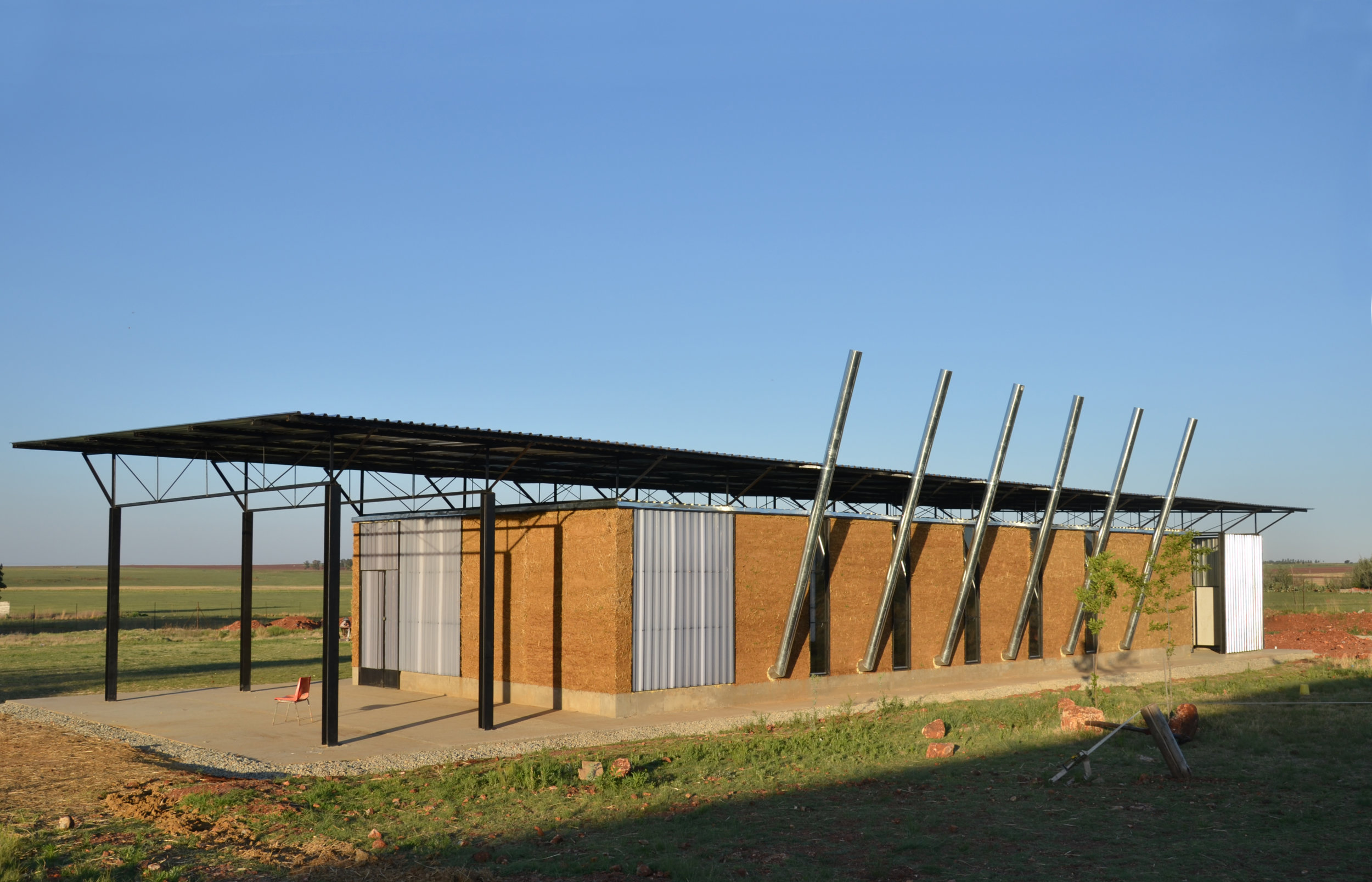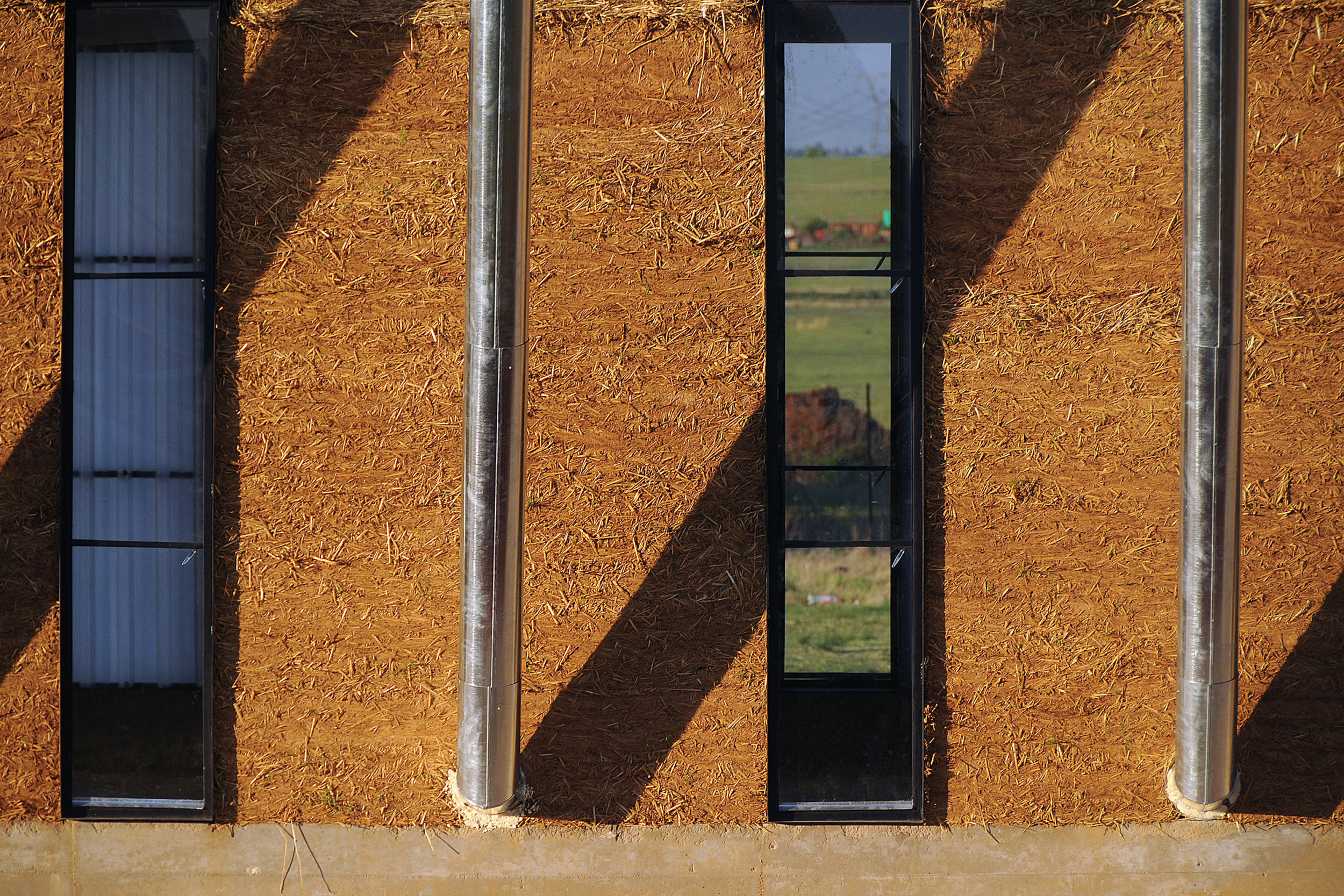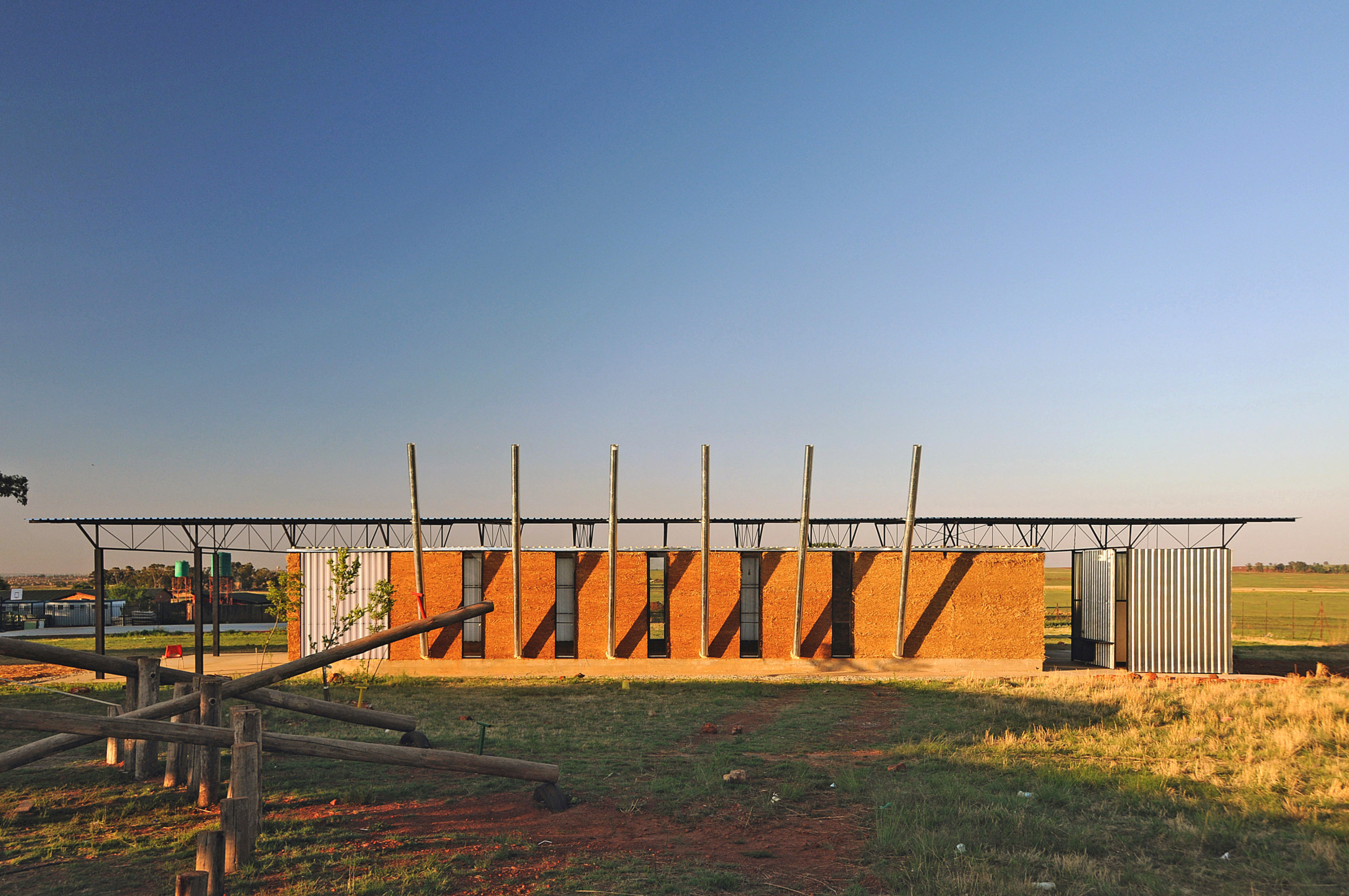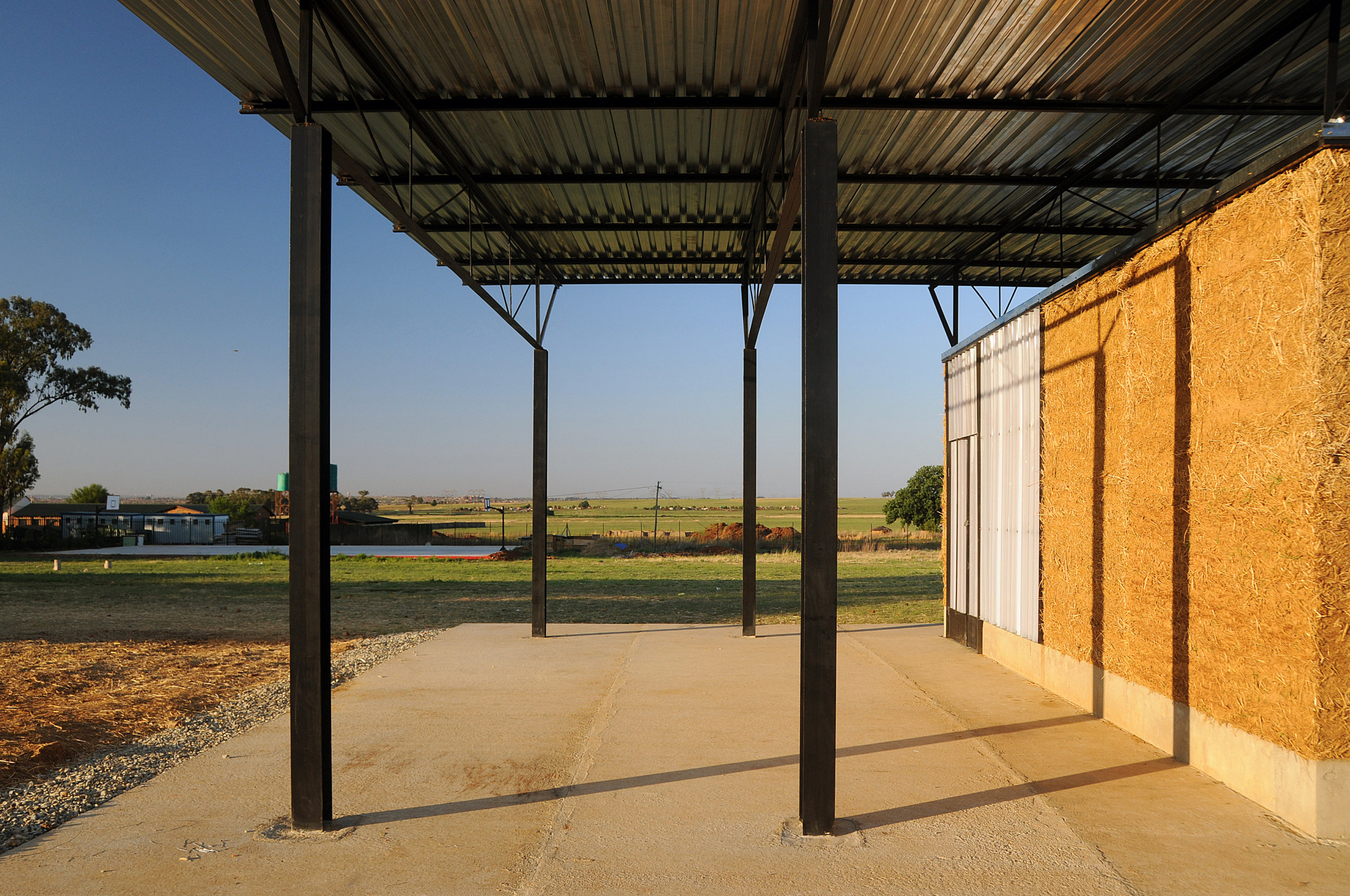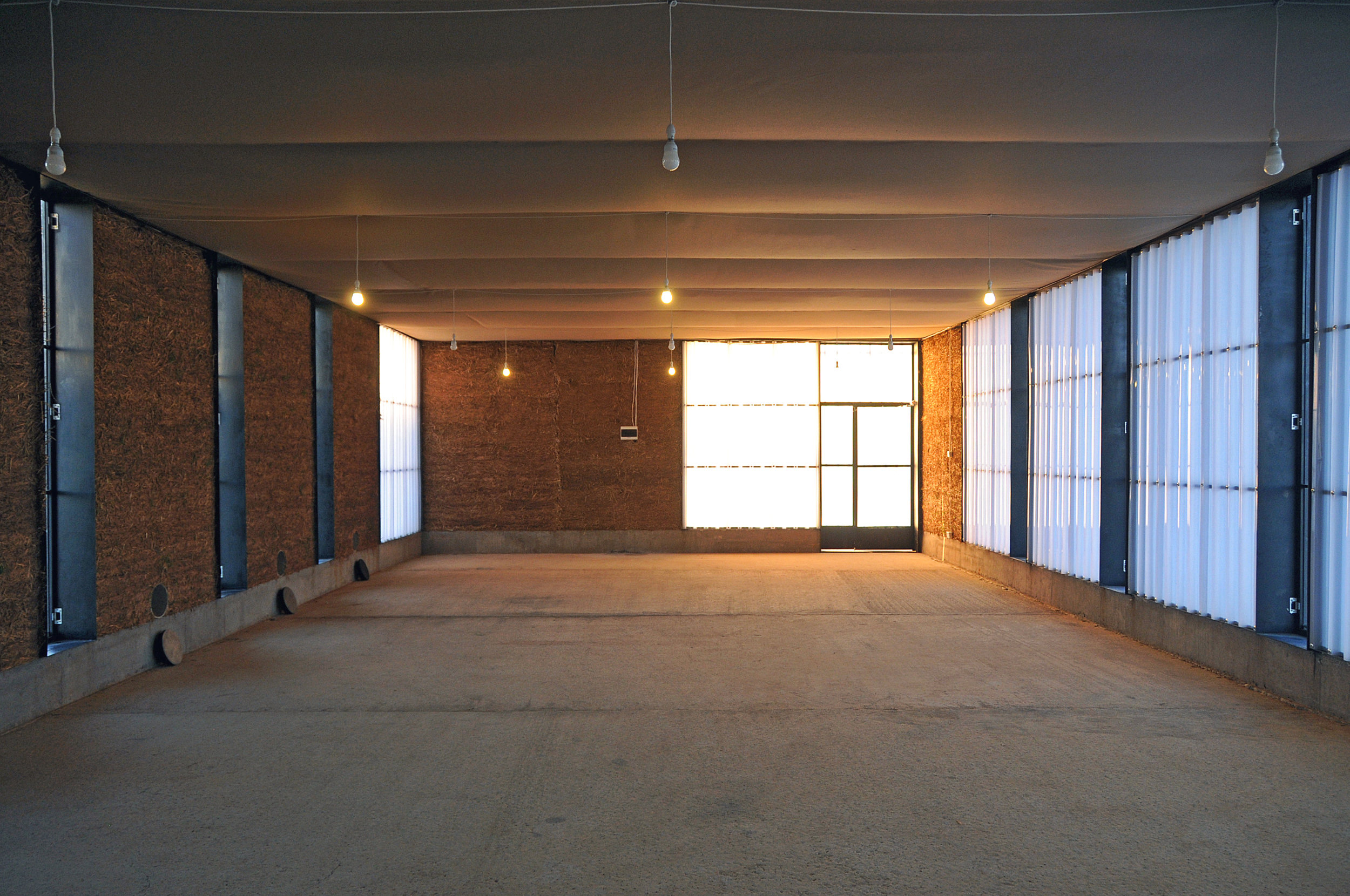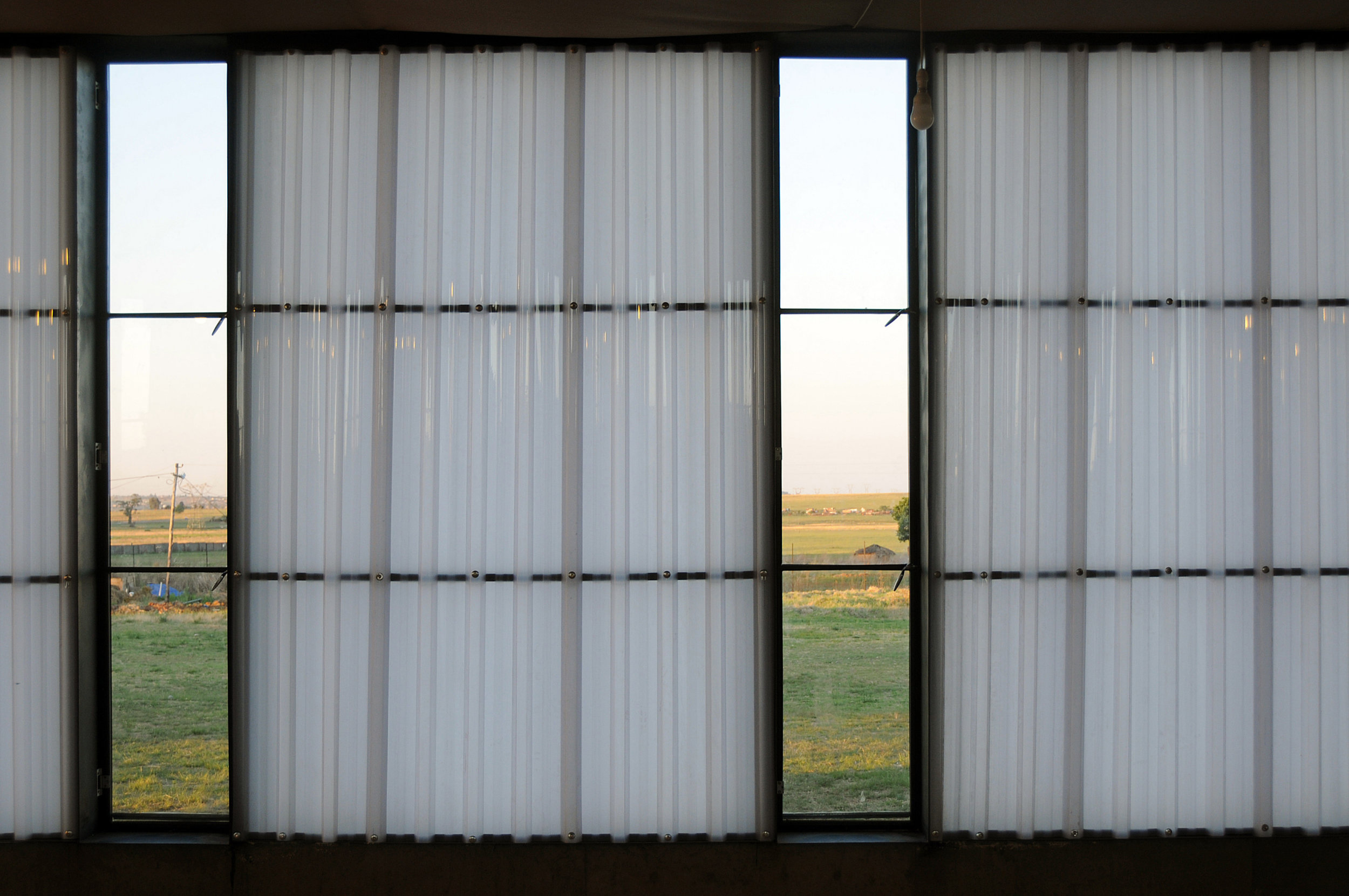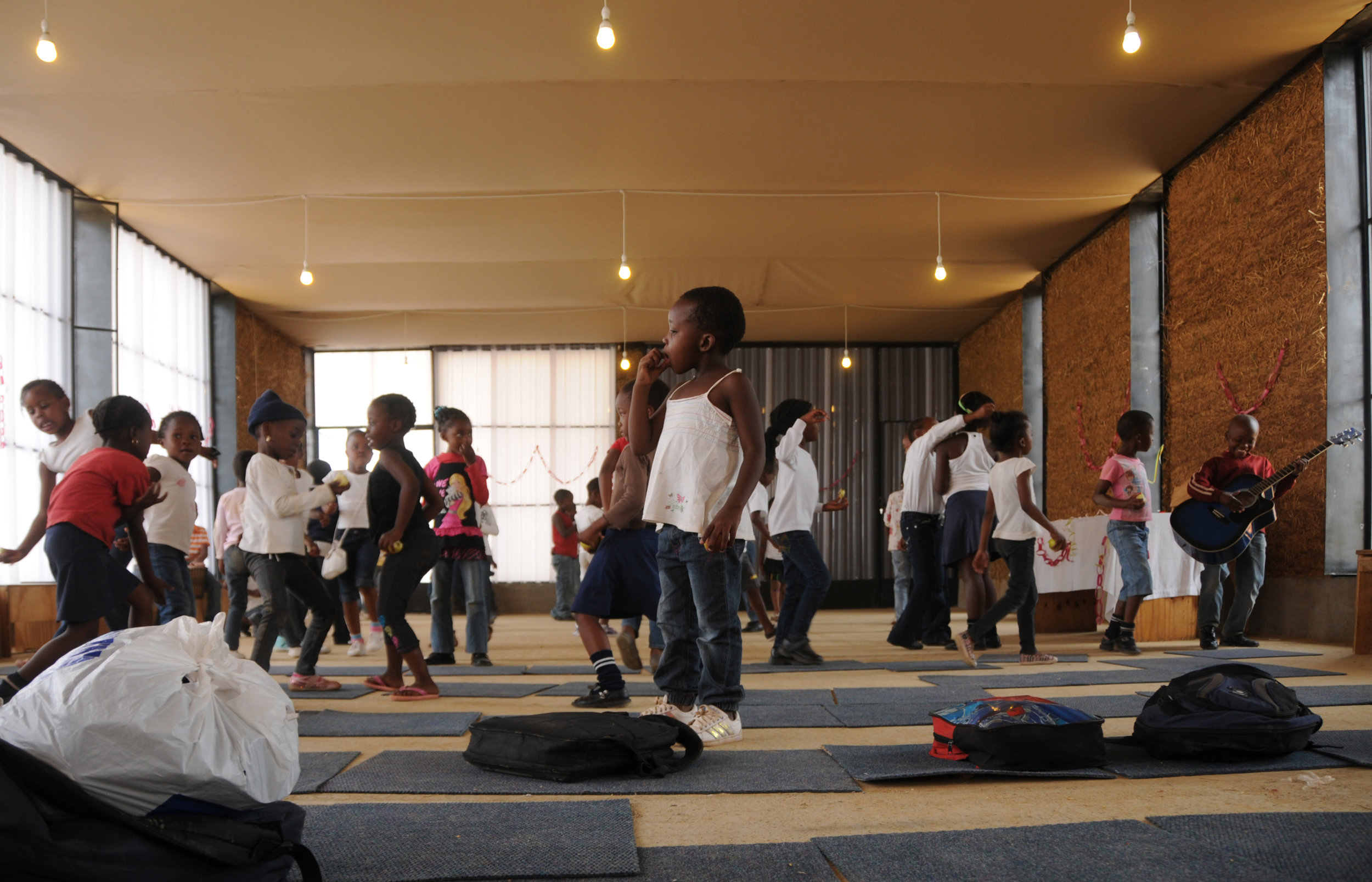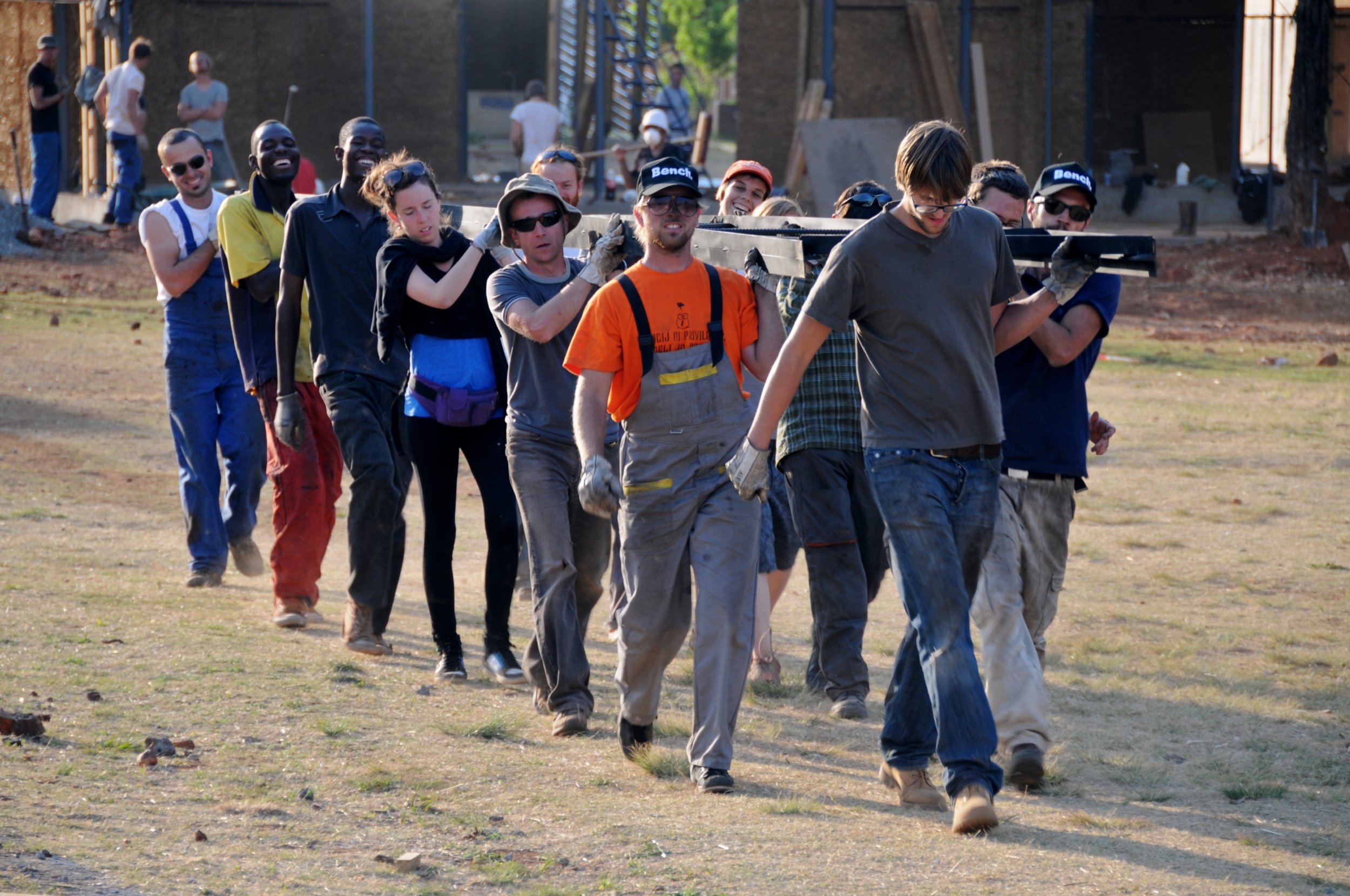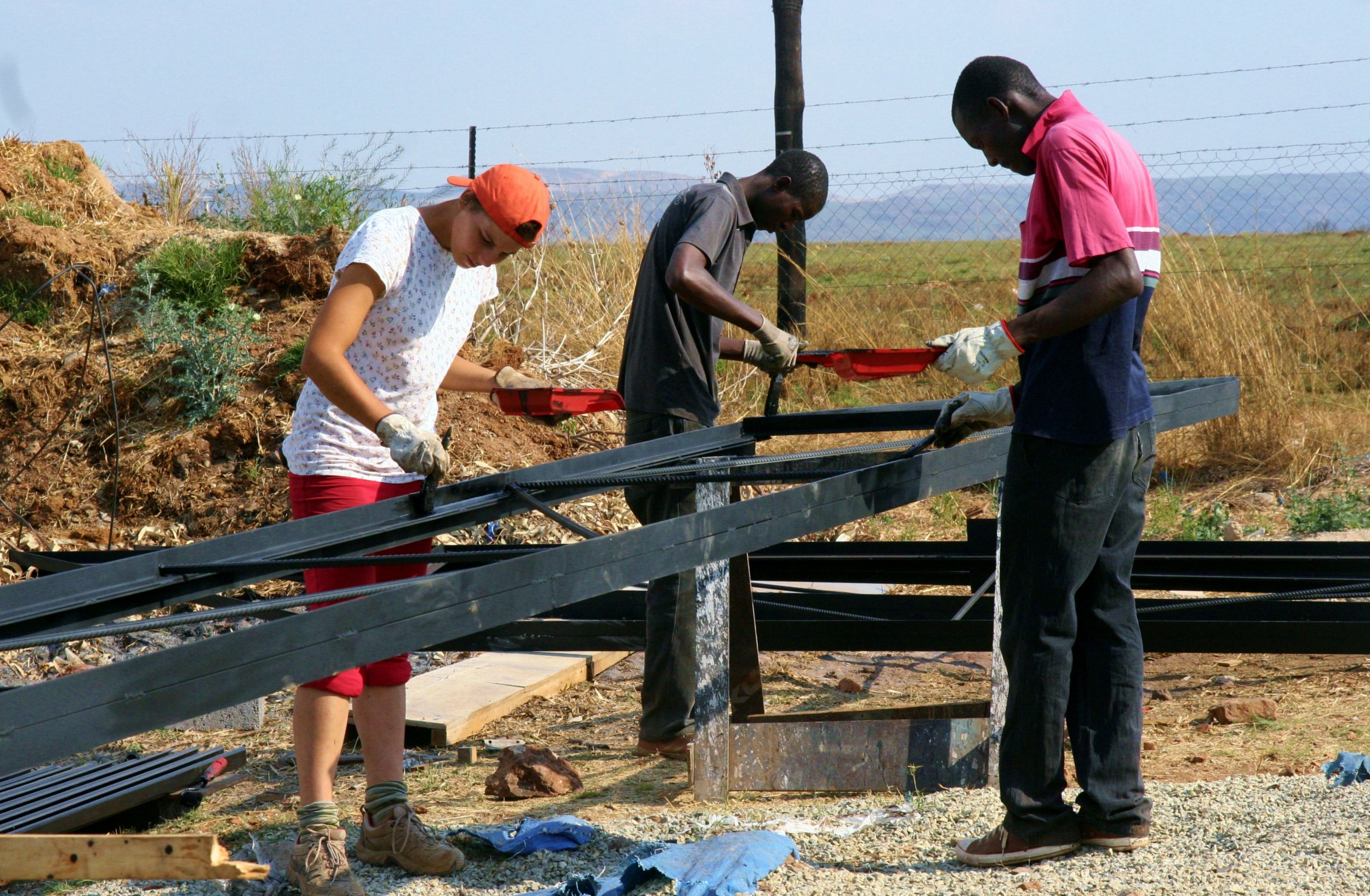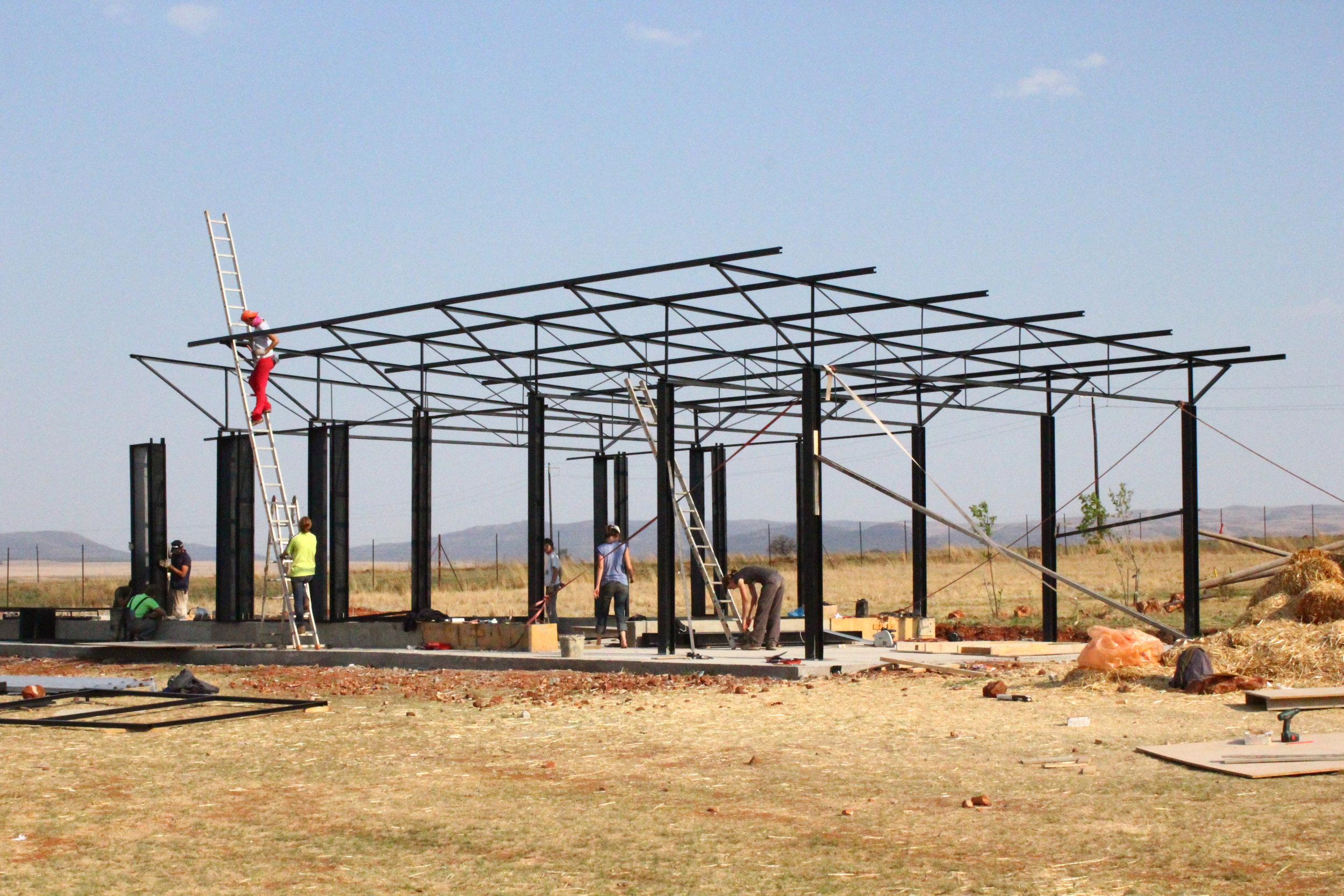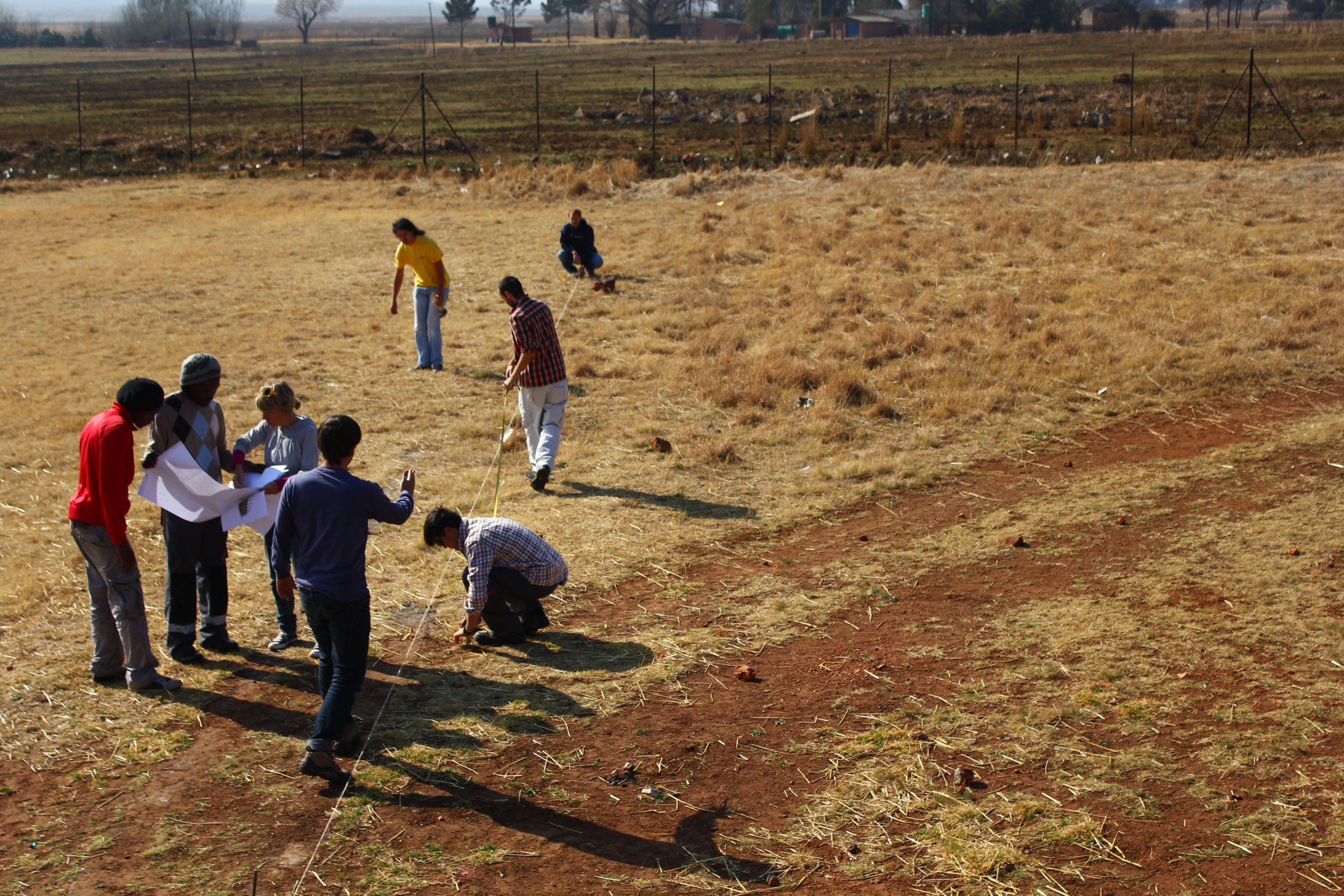Multpurpose hall, Ithuba Skills College
Construction: Sep-Oct 2011 (Johannesburg, SA)
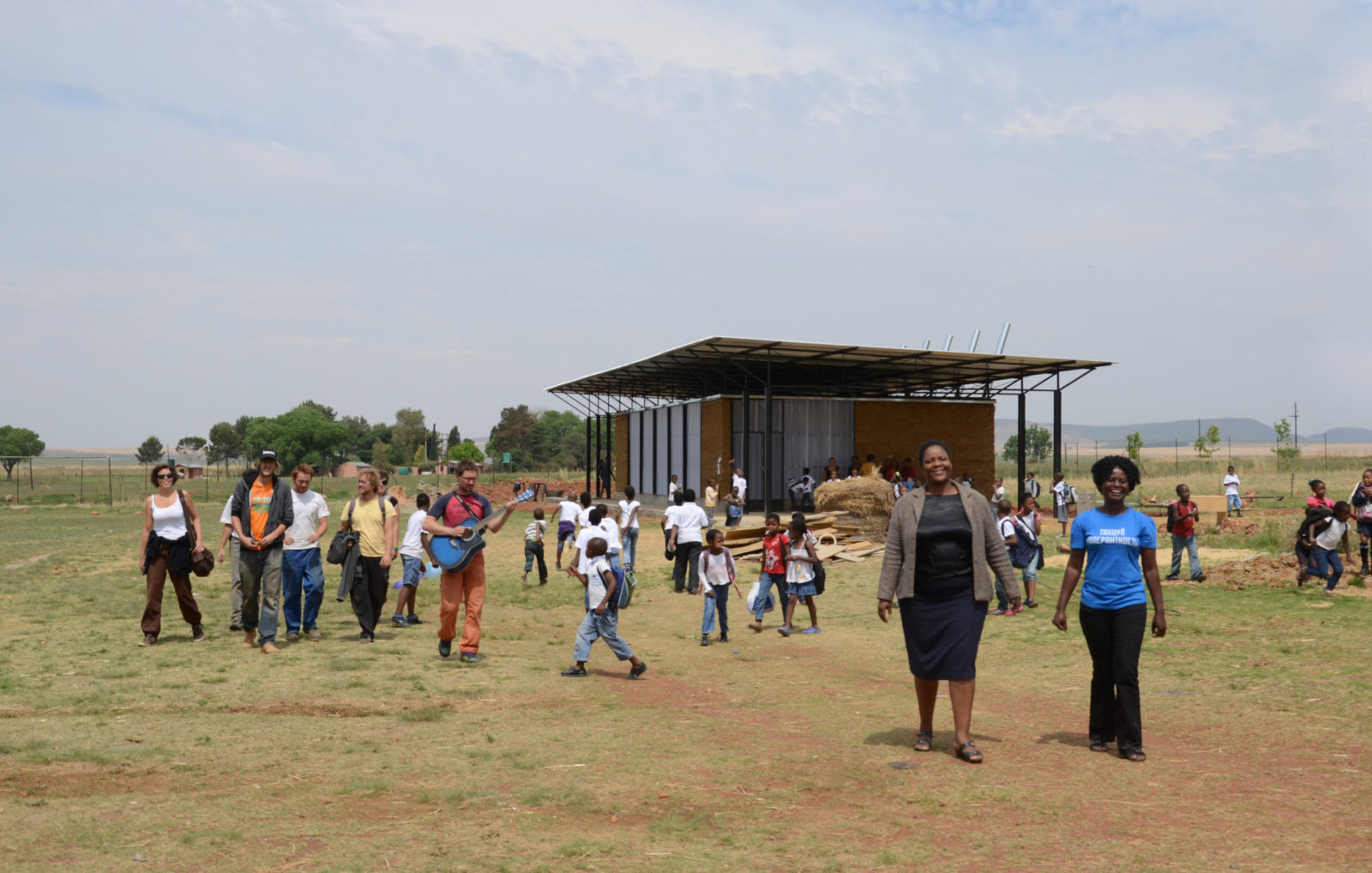
In addition to the Ithuba Skills College, the Austrian SARCH foundation also established a primary school. It was there that a team of mentors and students from Ljubljana’s Faculty of Architecture teamed up with local workers and built a multipurpose hall in 2011. The project drew on the experience gained during the construction of the previously built library and classroom. However, a tighter budget and higher costs brought on by a global recession meant materials had to be used carefully, and the design needed to be more energy efficient.
The multipurpose hall is held up by a steel framework, lighter in weight compared to the library and classroom. It is welded from “L” profiles and reinforcing rods (rebar). The walls are made of compressed earth blocks (mixture of straw and clay), while the roof is comprised of metal sheets. As before, climate responsiveness was a key consideration in the design. The north façade, made of two layers of transparent corrugated plastic that traps the air in between, allows for passive heating during the winter and cooling during summer. The south-facing façade, on the other hand, is more enclosed, sporting high and narrow windows for cross-ventilation during summer time. There are six “air vents” between the windows, which help the expulsion of cold air during winter.
The building showcases how quality architecture does not need to be complicated or expensive – success can be achieved with simple solutions and affordable materials. This transfer and application of ideas to the local environment serves to improve the construction of buildings and, consequently, people’s living conditions.
